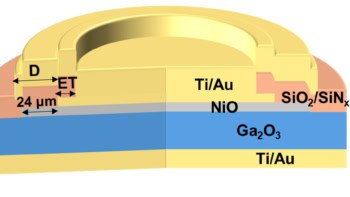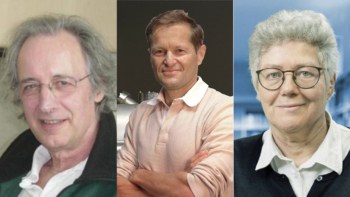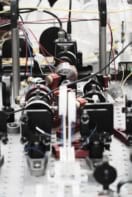
A new integrated “snapshot spectroscopy” system developed in China can determine the spectral and spatial composition of light from an object with much better precision than other existing systems. The instrument uses randomly textured lithium niobate and its developers have used it for astronomical imaging and materials analysis – and they say that other applications are possible.
Spectroscopy is crucial to analysis of all kinds of objects in science and engineering, from studying the radiation emitted by stars to identifying potential food contaminants. Conventional spectrometers – such as those used on telescopes – rely on diffractive optics to separate incoming light into its constituent wavelengths. This makes them inherently large, expensive and inefficient at rapid image acquisition as the light from each point source has to be spatially separated to resolve the wavelength components.
In recent years researchers have combined computational methods with advanced optical sensors to create computational spectrometers with the potential to rival conventional instruments. One such approach is hyperspectral snapshot imaging, which captures both spectral and spatial information in the same image. There are currently two main snapshot-imaging techniques available. Narrowband-filtered snapshot spectral imagers comprise a mosaic pattern of narrowband filters and acquire an image by taking repeated snapshots at different wavelengths. However, these trade spectral resolution with spatial resolution, as each extra band requires its own tile within the mosaic. A more complex alternative design – the broadband-modulated snapshot spectral imager – uses a single, broadband detector covered with a spatially varying element such as a metasurface that interacts with the light and imprints spectral encoding information onto each pixel. However, these are complex to manufacture and their spectral resolution is limited to the nanometre scale.
Random thicknesses
In the new work, researchers led by Lu Fang at Tsinghua University in Beijing unveil a spectroscopy technique that utilizes the nonlinear optical properties of lithium niobate to achieve sub-Ångström spectral resolution in a simply-fabricated, integrated snapshot detector they call RAFAEL. A lithium niobate layer with random, sub-wavelength thickness variations is surrounded by distributed Bragg reflectors, forming optical cavities. These are integrated into a stack with a set of electrodes. Each cavity corresponds to a single pixel. Incident light enters from one side of a cavity, interacting with the lithium niobate repeatedly before exiting and being detected. Because lithium niobate is nonlinear, its response varies with the wavelength of the light.
The researchers then applied a bias voltage using the electrodes. The nonlinear optical response of lithium niobate means that this bias alters its response to light differently at different wavelengths. Moreover, the random variation of the lithium niobate’s thickness around the surface means that the wavelength variation is spatially specific.
The researchers designed a machine learning algorithm and trained it to use this variation of applied bias voltage with resulting wavelength detected at each point to reconstruct the incident wavelengths on the detector at each point in space.
“The randomness is useful for making the equations independent,” explains Fang; “We want to have uncorrelated equations so we can solve them.”
Thousands of stars
The researchers showed that they could achieve 88 Hz snapshot spectroscopy on a grid of 2048×2048 pixels with a spectral resolution of 0.5 Å (0.05 nm) between wavelengths of 400–1000 nm. They demonstrated this by capturing the full atomic absorption spectra of up to 5600 stars in a single snapshot. This is a two to four orders of magnitude improvement in observational efficiency over world-class astronomical spectrometers. They also demonstrated other applications, including a materials analysis challenge involving the distinction of a real leaf from a fake one. The two looked identical at optical wavelengths, but, using its broader range of wavelengths, RAFAEL was able to distinguish between the two.

Ultraviolet dual-comb spectroscopy system counts single photons
The researchers are now attempting to improve the device further: “I still think that sub-Ångstrom is not the ending – it’s just the starting point,” says Fu. “We want to push the limit of our resolution to the picometre.” In addition, she says, they are working on further integration of the device – which requires no specialized lithography – for easier use in the field. “We’ve already put this technology on a drone platform,” she reveals. The team is also working with astronomical observatories such as Gran Telescopio Canarias in La Palma, Spain.
The research is described in Nature.
Computational imaging expert David Brady of Duke University in North Carolina is impressed by the instrument. “It’s a compact package with extremely high spectral resolution,” he says; “Typically an optical instrument, like a CMOS sensor that’s used here, is going to have between 10,000 and 100,000 photo-electrons per pixel. That’s way too many photons for getting one measurement…I think you’ll see that with spectral imaging as is done here, but also with temporal imaging. People are saying you don’t need to go at 30 frames second, you can go at a million frames per second and push closer to the single photon limit, and then that would require you to do computation to figure out what it all means.”



